After decades of being told to avoid fats and go for sugar-filled alternatives that were “fat free”, the world of nutrition and medicine has finally realized and agreed that, well, we couldn’t have been more wrong. But, with that newfound acceptance that sugar is bad and fat is good, (although it is, of course, a lot more complicated than that!), people have become confused, or misinterpreted healthy alternatives, as a result. The truth is, yes, there are substitutes and alternatives that are far better options than refined sugar, but, they are not harmless, free-for-all options, and there are some important points to keep in mind when choosing your food and ingredients.
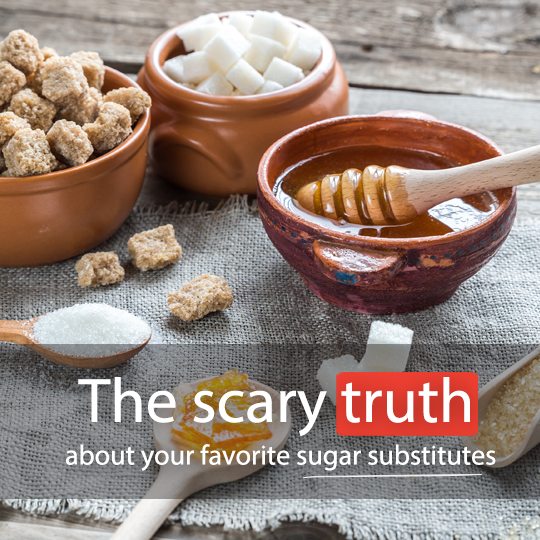
What’s wrong with sugar?
The problem with sugar doesn’t lie with the teaspoon you add to your coffee or homemade snacks alone – the real problem is the amount of sugar you are consuming in total, often without realizing it. Unthinkable amounts of sugar are added to everything, from pre-made meals, sauces and marinades to breakfast cereals, supermarket breads, packaged cakes and sweets, as well as, of course, take-out, and even restaurant food. As a result of all the unknown sugar we take in on a daily basis, our modern day western diets are far too high in sugar, which has led to a huge increase in diseases and conditions like obesity, type 2 diabetes and heart disease. And with the increased amount of sugar we unintentionally consume, it is important to therefore be aware of the sugar we use at home, along with, of course, limiting the amount of take-out, ready meals and packaged cookies we eat!
What about my favorite sugar substitutes?
Once all this new knowledge came out about the harm sugar can do in large amounts, from contributing to obesity, diabetes and liver disease to causing insulin resistance, tooth decay and decreasing metabolism, people did start opting for substitutes and natural sweeteners as an alternative. While that can be a great idea, there is still a lot of misinformation floating about in relation to how much sugar you still might be consuming, depending on your choices of sweeteners. Some people took these substitutes as a free-for-all, but they definitely are not! It’s important to understand what your favorite sugar substitutes are actually made up of, and what role they play when they make their way into your system.
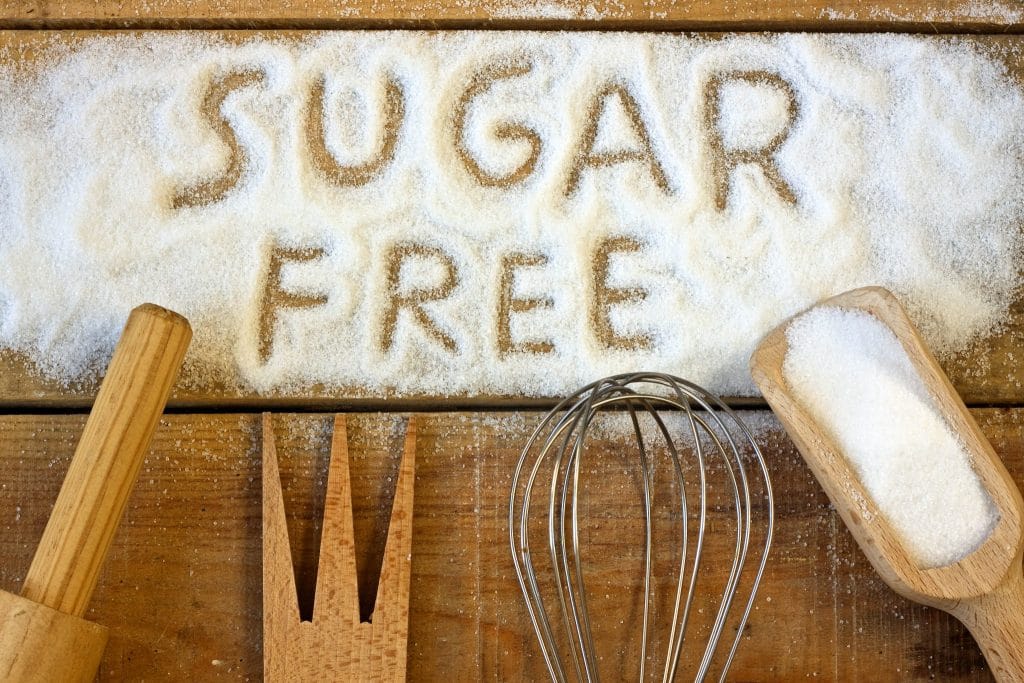
Here is a compilation of some of the most popular natural substitutes for refined sugar, and information about their nutritional value, to help you better understand what it is you’re actually putting into your coffee, cereal and home baked goods, and whether you are choosing the best option for your health…
Agave Nectar (per 100g)
Calories – 286
Total fat – 0g
Cholesterol – 0mg
Sodium – 0mg
Total carbohydrates – 76g (25%)
Dietary Fiber – 5g
Sugars – 71g
Protein – 0g
Vitamin A – 0%
Vitamin C – 0%
Calcium – 0%
Iron – 0%
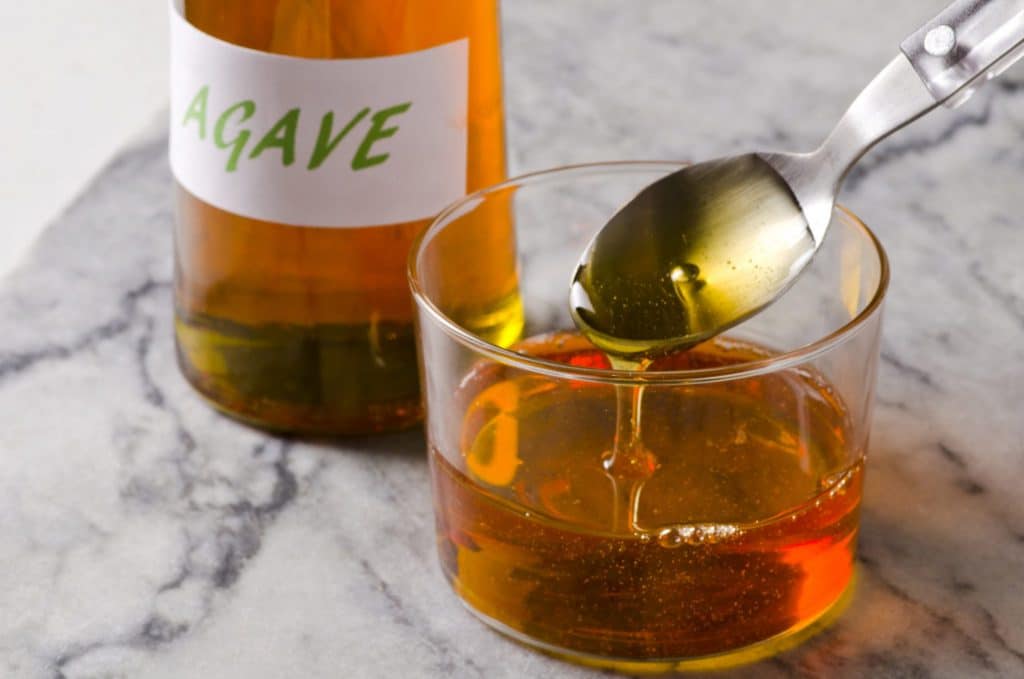
Agave is a plant traditionally used to make tequila. It is extremely sweet and became a very popular sugar alternative in recent years around the western world. To make the commercial nectar that you find in supermarkets, several types of the plant are blended together to create a sweet liquid. It has more calories than sugar, but is sweeter, meaning you don’t need as much of it to achieve the desired sweetness. Agave is marketed as a “healthy” alternative to sugar because it is low in glucose, meaning it doesn’t spike blood sugar levels as much as other sweeteners. That means it has a low glycemic index and is said to be diabetic-friendly.
However, agave is very high in fructose, which, in our modern western diets, that are generally high-carb and high-calorie, can be a serious problem. Glucose can be metabolized by every cell in the human body, and every living thing on the planet has glucose in it. Fructose, on the other hand, can only be metabolized in significant amounts by the liver, meaning when it gets overloaded, it turns the fructose into fat. That is then transported as VLDL (very low density lipoprotein), which is made up of cholesterol, triglycerides and protein.
The verdict… agave nectar is not the best substitute for refined sugar because of its high fructose content. It can be used in small amounts, but think of it in the same way as you do sugar, and minimize your intake!
Honey (per 100g)
Calories – 304
Total fat – 0g
Cholesterol – 0mg
Sodium – 4mg
Total carbohydrates – 82g (27%)
Dietary Fiber – 0g
Sugars – 82g
Protein – 0g
Vitamin A – 0%
Vitamin C – 0%
Calcium – 1%
Iron – 2%

Honey has always seemed quite irresistible, ever since Winnie the Pooh started appearing with buckets and beehives of it on our television screens as children. It has been a staple throughout human evolution and used to treat a number of conditions since ancient times. The beautiful golden substance created by honey bees has been used by grandmothers and mothers to soothe sore throats and help medicine go down for generations, and in the late 19th century, scientists confirmed that honey did, in fact, have natural antibacterial qualities. It is one of the first sugar substitutes that people started using, before all the new science on the effects of refined sugar was even released. People added it to porridge, yoghurt, banana smoothies and stir fries instead of sugar, and even in some old bread and cake recipes.
There was also a very promising theory floating about for a while that people with pollen allergies could relieve their symptoms by eating local honey. However, although it was a nice thought and seemed to make sense, it was proven wrong, because springtime allergies are caused by pollen from non-flowering trees, weeds and grass that gets blown around by the wind, whereas bees collect pollen from flowers.
Honey is high in sugar content – half of which is fructose – but it also contains trace amounts of vitamins and minerals and an abundance of antioxidants. It is produced by bees during a series of digestion and regurgitation of the nectar collected from local flower pollen. As a result, the nutritional qualities of honey depend on the source of its nectar. For example, Manuka honey has become extremely popular for its dihydroxyacetone content, which is found in high concentrations of Manuka flower nectar (found in New Zealand), which turns into methylglyoxal (MG). This antibacterial, antibiotic component is found in most types of honey, but never in such large quantities as Manuka honey, which is why it has become a popular medicinal substance.
The verdict… like agave nectar, honey is high in sugar and should not be consumed in large amounts. It has more health benefits than refined sugar, so it is a better option, but its high sugar content makes it a sweetener that should be used sparingly.
Maple Syrup (per 100g)
Calories – 261
Total fat – 0g
Cholesterol – 0mg
Sodium – 9mg
Total carbohydrates – 67g (22%)
Dietary fiber – 0g
Sugars – 60g
Protein – 0g
Vitamin A – 0%
Vitamin C – 0%
Calcium 7%
Iron 7%
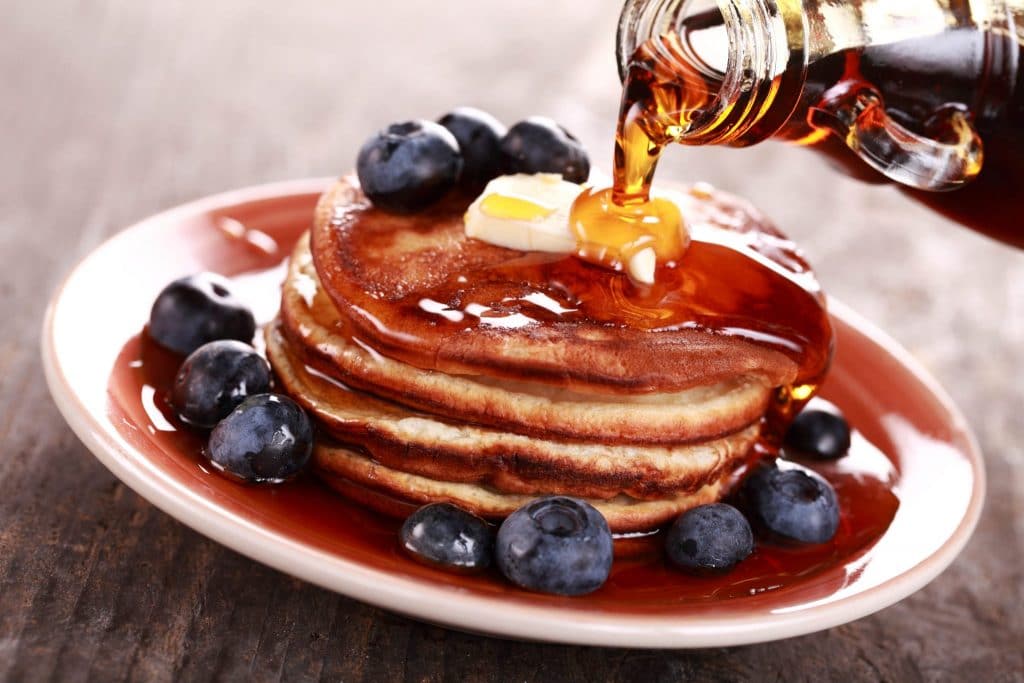
Maple syrup has less sugar than honey and agave nectar, and some studies suggest that it can boost the immune system, improve skin and calm sore stomachs. However, it is still high in sugar, so it’s always important to remember that, like agave and honey, it can still spike blood sugar and add to your total sugar intake, which, in modern western diets, is already too much!
Maple syrup is made from the sap of maple trees and most of the world’s supply comes from Canada. There are different grades of maple syrup, which are distinguished by their color. Grade A maple syrup includes the colors light amber, medium amber and dark amber, and Grade B is the darkest form of maple syrup. The darker varieties are made by sap that is harvested later in the season and have a stronger flavor. Dark maple syrup is popular for baking, while lighter varieties are popular options for pancake toppings. Replacing refined sugar with maple syrup will cut the sugar content by one-third.
The verdict… maple syrup has less sugar and more vitamins and minerals than honey and agave nectar, making it a better choice for sweetening foods and beverages like smoothies and baked goods.
Dates (per 100g)
Calories – 277
Total fat – 0g
Cholesterol – 0mg
Sodium – 1mg
Total carbohydrates – 75g (25%)
Dietary fiber – 7g
Sugars – 66g
Protein – 2g
Vitamin A – 3%
Vitamin C – 0%
Calcium – 6%
Iron – 5%
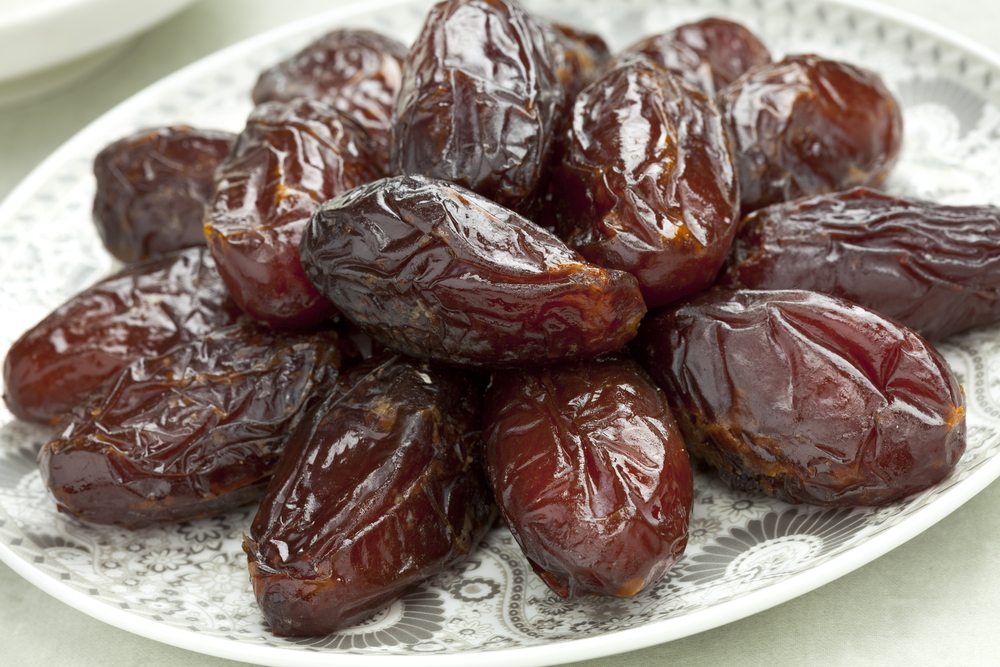
Popular with healthy and natural food bloggers around the world, dates – especially medjool dates – can be used as biscuit bases when ground with nuts, or in protein balls and brownies as a great all-round alternative to flour, butter and sugar. They work well because they are sticky enough to form doughs and they have a fantastic caramel taste, which makes desserts absolutely delicious! Dates are extremely natural and have been around for centuries. While they are high in fiber, dates are also high in sugar, so, again, it’s important to eat them in moderation. However, the fiber helps slow down the fructose absorption, which is definitely a plus, but there is a large concentration of fructose per gram, so it really is important to watch the ratio of dates you are eating. For that reason, putting them in dessert recipes, rather than eating them as they are, is a great option, because you can cut down on the sweet factor per serving, which, ultimately, cuts down on your sugar intake.
The verdict… dates are high in fiber and are healthy, but they are also high in sugar, meaning, like agave nectar, honey and maple syrup, should be eaten in moderation.
Prunes (per 100g)
Calories – 240g
Total fat – 0g
Cholesterol – 0mg
Sodium – 2mg
Total carbohydrates – 64g (21%)
Dietary fiber – 7g
Sugars – 38g
Protein – 2g
Vitamin A – 16%
Vitamin C – 1%
Calcium – 4%
Iron – 5%
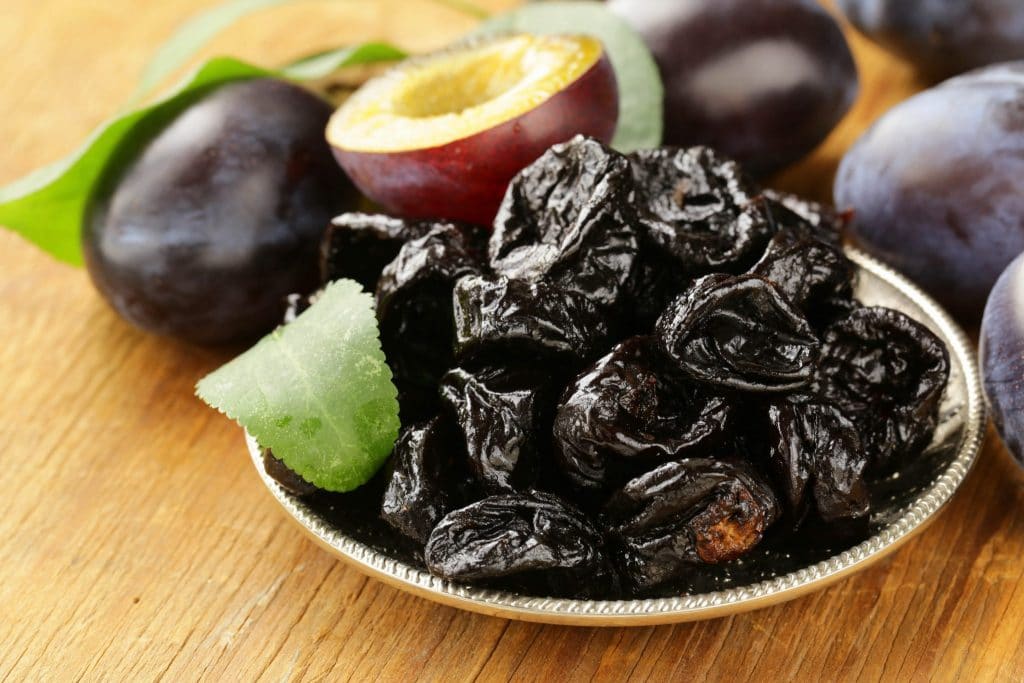
This is a matter of personal taste – some people prefer the taste of prunes to dates, but most often, it is the other way around. That is unfortunate, because prunes (dried plums) are far healthier – in fact, they have little more than half the amount of sugar that dates have. They are also a great source of vitamins, minerals and fiber, and they are extremely beneficial for digestion (especially constipation). If you want to eat prunes or dates as they are for a snack, definitely opt for prunes. The problem, however, with swapping dates for prunes in natural desserts and sweets is that prunes don’t have the same sticky factor that dates have, which helps things like protein balls and brownies hold their form, rather than crumble. The best option here if you do want to cut down on your fructose intake when baking, is to substitute half your dates with prunes, which means you will still get the stickiness from the dates without the same amount of sugar!
The verdict… where possible, always choose prunes over dates. They do still have sugar, so you can’t think of them as not contributing to your daily intake of sugar, but it is far less than the other sweet options we’ve looked at so far.
Stevia (per 100g)
Calories – 0
Total fat – 0g
Total cholesterol – 0mg
Sodium – 0mg
Total carbohydrates – 0g
Dietary fiber – 0g
Sugars – 0g
Protein – 0g
Vitamin A – 0%
Vitamin C – 0%
Calcium – 0%
Iron – 0%

This is probably the best option for substituting refined sugar for a natural sweetener in tea, coffee, cereal and cake recipes – especially if you want it to actually be sugar-free. The most important thing to note here though is that stevia can usually be found on supermarket shelves, but if you look at the ingredients, you’ll often find that half of it is actually sugar or some other artificial sweetener. You can find stevia in powder and liquid form, but make sure when buying it that it is 100% stevia leaf. You can usually find it in health food stores or online.
Stevia is a Central and South American native green leafy plant and has long been used as a natural medicine. It is up to 40 times sweeter than sugar, meaning you need far less of it, and, on top of that, it has no calories at all and won’t spike your blood sugar. Using stevia as a supplement for sugar can therefore reduce blood pressure and lower the risk of heart disease, stroke, kidney failure and type 2 diabetes.
The verdict… stevia is the best natural sugar substitute option that we’ve looked at so far. Unlike prunes, dates, maple syrup, honey and agave nectar, stevia doesn’t have any sugar, calories or carbohydrates.
Cinnamon (per 100g)
Calories – 247
Total fat – 1g
Total cholesterol – 0mg
Sodium – 10mg
Total carbohydrates – 81g (27%)
Dietary fiber – 53g
Sugars – 2g
Protein – 4g
Vitamin A – 6%
Vitamin C – 6%
Calcium – 100%
Iron – 46%

Ok, so cinnamon is not actually very sweet, but it is absolutely delicious, and gives food or coffee a nice warming, spicy twist. It has a number of fantastic health benefits. The thing about trying to cut back on sugar is not to supplement it 100%. It is actually more important to try and get used to having your food a bit less sweet, and substituting at least some of your sugar with cinnamon is a great way to do that. If you take sugar in your coffee, try putting half your usual amount in and replacing the other half with cinnamon. The same rule applies for baking – by adding cinnamon to your sweet recipes, you can reduce the amount of sugar or sweetener you need. Not only will cinnamon reduce the amount of sugar you take in, but it can improve metabolism, reduce bad cholesterol, improve blood sugar and help balance hormones as well. It also has anti-inflammatory and antibacterial properties.
The verdict… cinnamon has a number of health benefits and is a great flavor that can help you wean yourself off sugar and sweeteners.
Some Tips To Live By
1. Start by reducing the amount of ready-made sauces, marinades and meals you eat, and definitely minimize (or eliminate) the takeout. You would be shocked to see how much sugar goes into premade food, so even simply preparing food from scratch at home will significantly reduce your sugar intake.
2. If you do take sugar in your tea or coffee, then something like stevia is a great alternative to cut down on your sugar intake. However, the best thing you can do is stop adding sweetener to these beverages entirely! You might think that is something you can’t do because you’re so used to the sweet taste, but it is actually quite easy to get used to. It could simply be that it is a habit you have, but once people get used to the taste after a few weeks, it is often the case that they wonder how they ever enjoyed sweetener in their coffee or tea before! Another option to help train yourself out of the habit is by adding cinnamon to your coffee – it adds a hint of sweetness and a lot of flavor.
3. One of the easiest and most effective ways to cut down on your sugar or sweetener intake without even realizing it is to simply halve the amount that your recipes call for when baking at home. Don’t worry – they will still be sweet! They just won’t be sickly sweet, and you might find that you actually prefer them that way. If not, you’ll soon get used to it! This is an old and extremely effective tip that is so easy to put in place and really makes a difference if you do a lot of home baking.
4. Cut down on starchy low-fiber carbs when cooking at home. Carbohydrates are broken down into sugar during the digestion process, meaning, if you’re making something like sweet pancakes using white flour, and then serving with maple syrup or chocolate, you are getting a gargantuan amount of sugar, between the carbs of the white flour and the… well… sugar. Try some alternative recipes or substitute starchy carbs for complex carbs that have more fiber in them, like whole wheat flour. That will slow down the release of sugar molecules as your body digests the food, which means your blood sugar will be maintained at a more moderate level, and slower release of sugars helps prevent the storage of fat.

Take Home Message
No matter which sweeteners you choose to favor, the bottom line is that western diets include far too much sugar, calories and low-fiber carbohydrates. Sugar, in particular, needs to be cut down on, whether you are getting it from refined sugar, maple syrup or honey. Stevia and cinnamon are the best alternatives to refined sugar, so, even if you halve the amount of sugar, maple syrup or honey you put in your coffee or recipes, and then further halve it and substitute with stevia or cinnamon, it will make an astronomical difference to your overall health.



